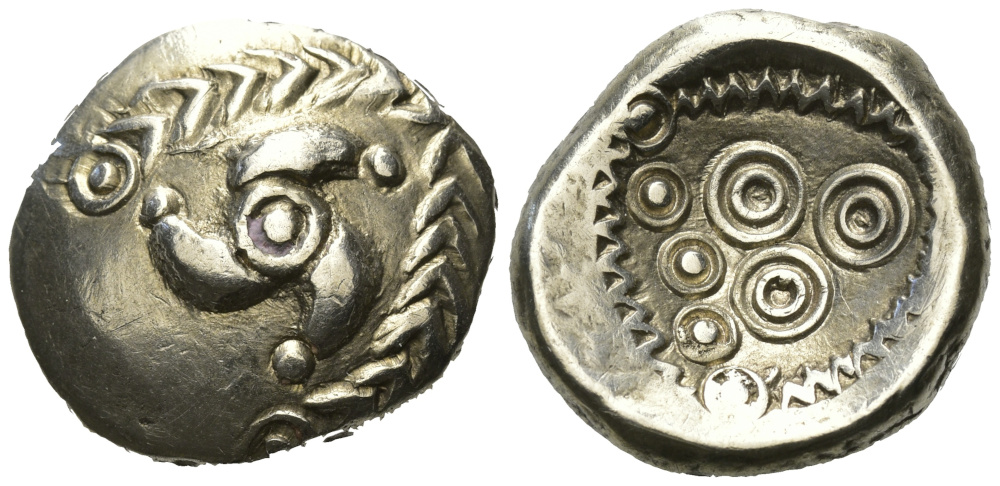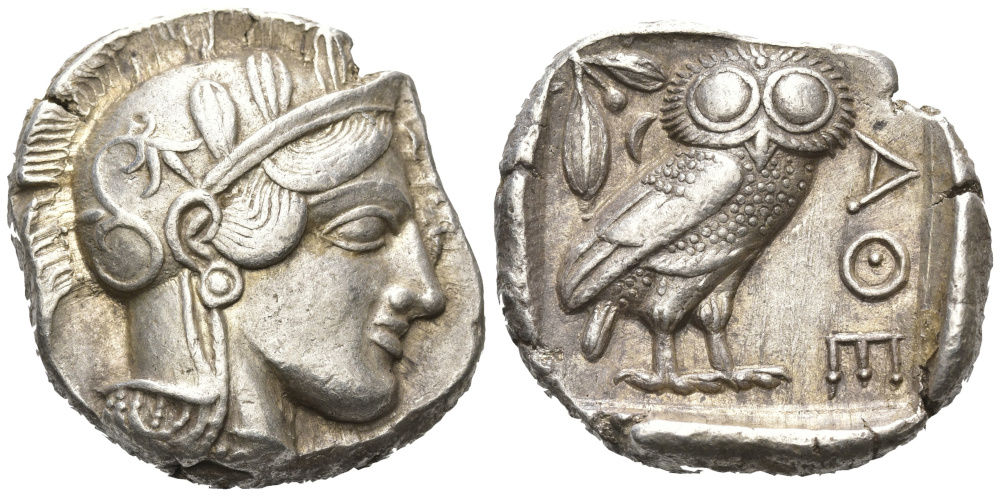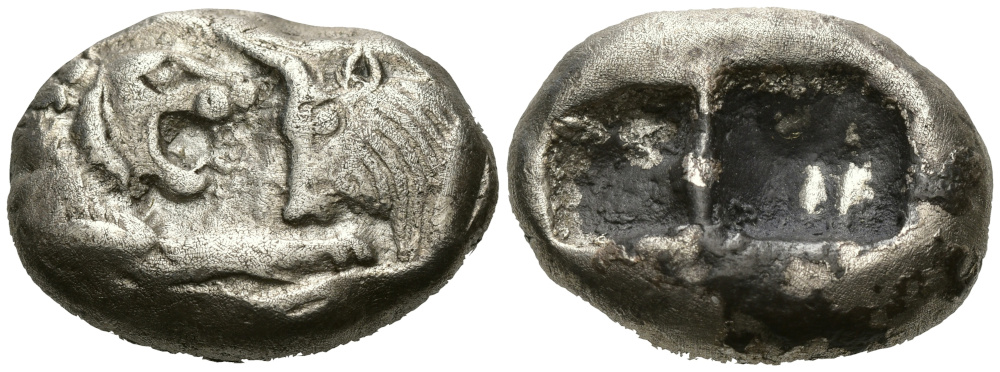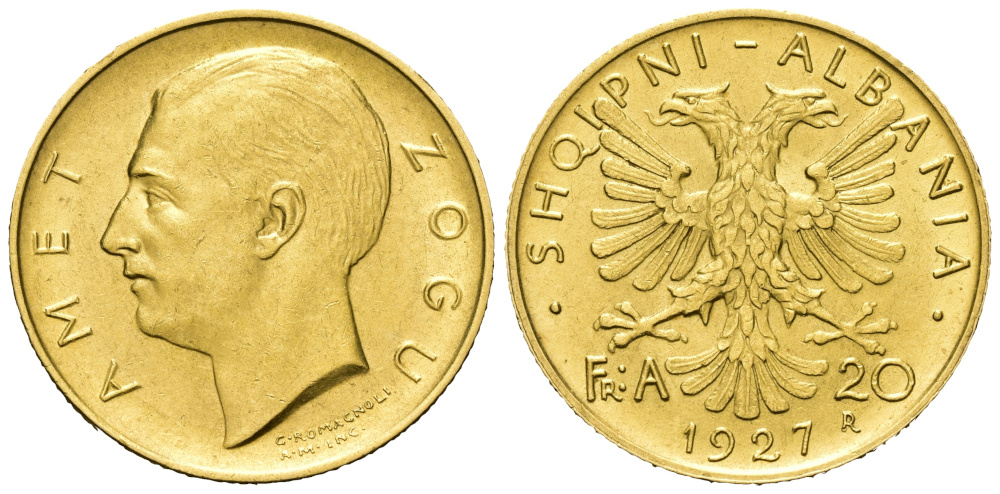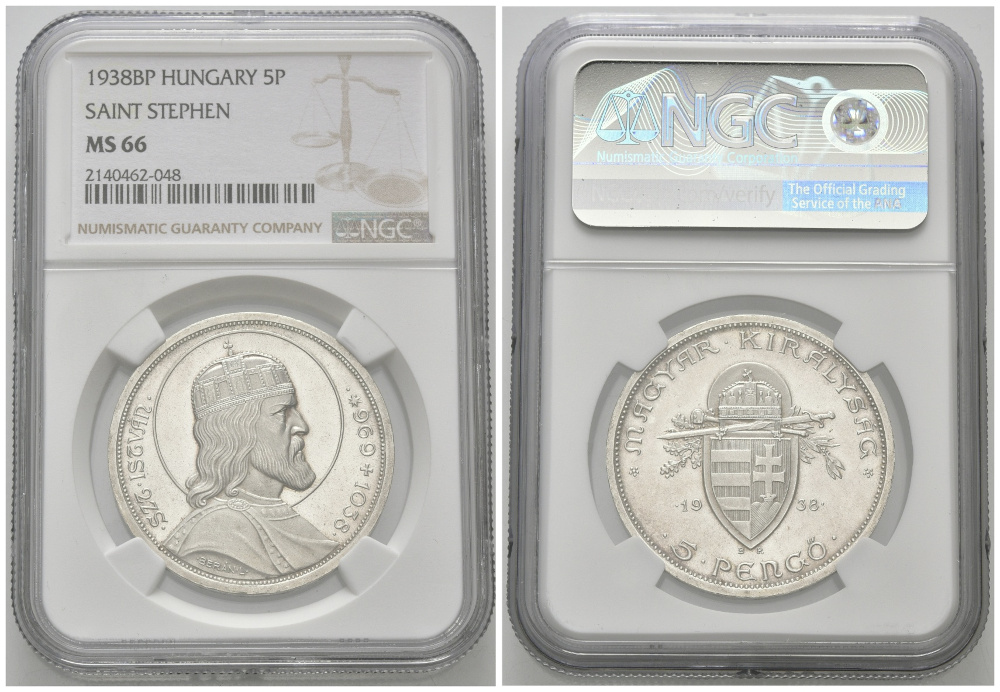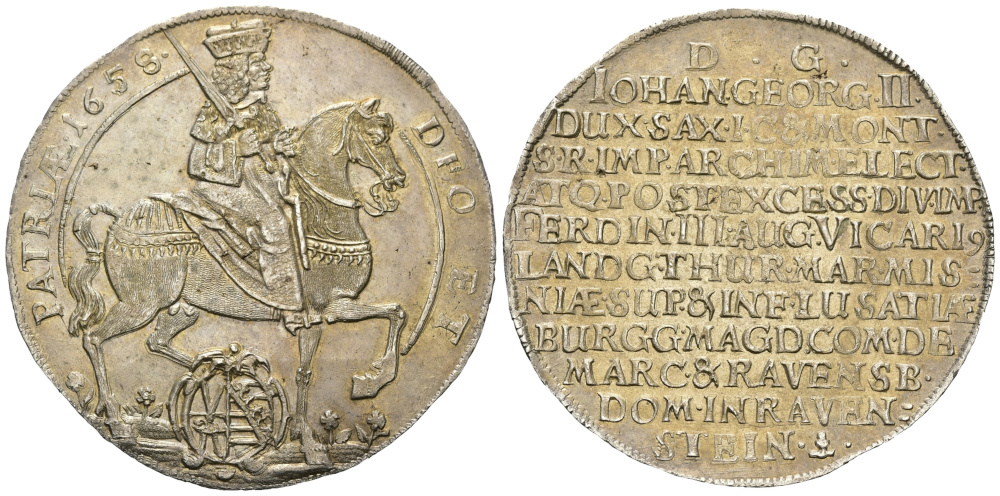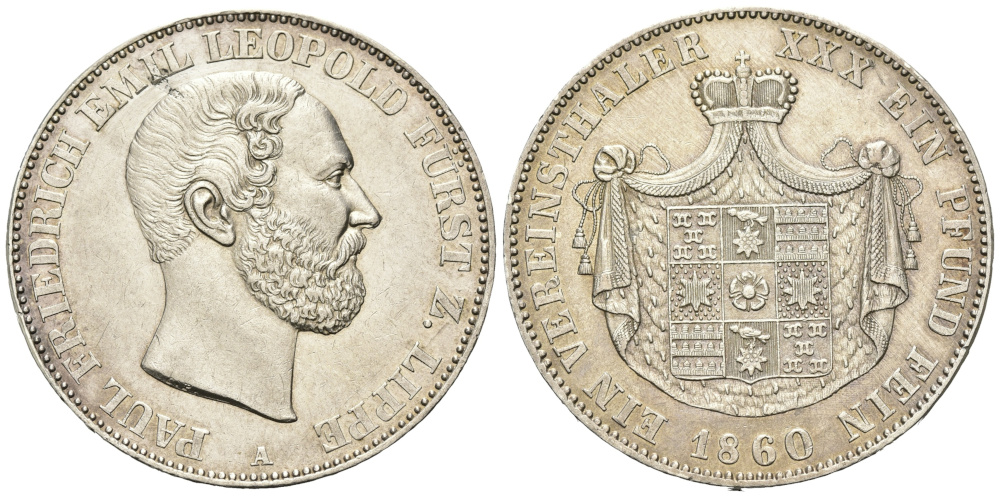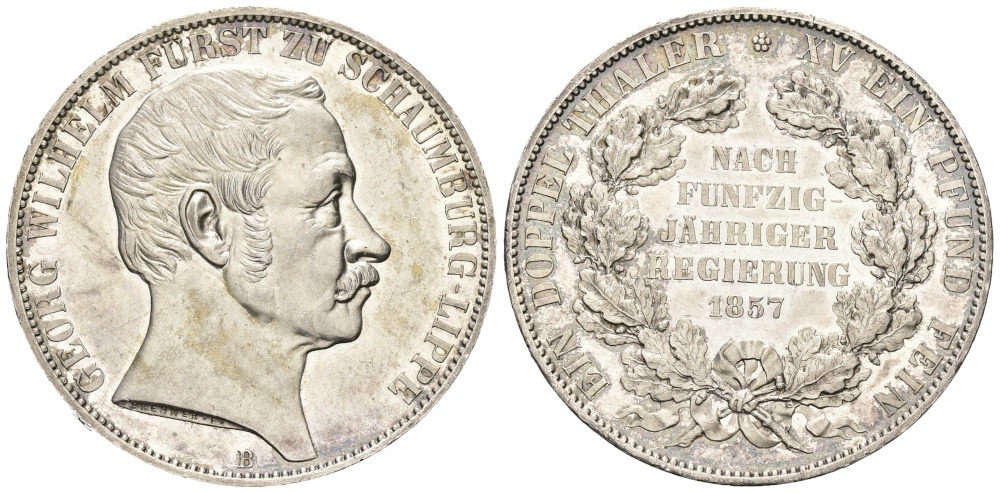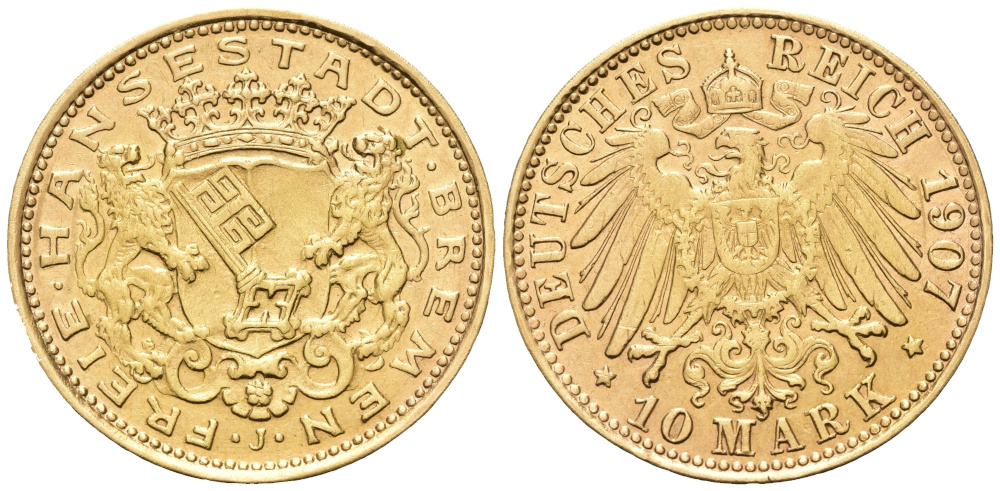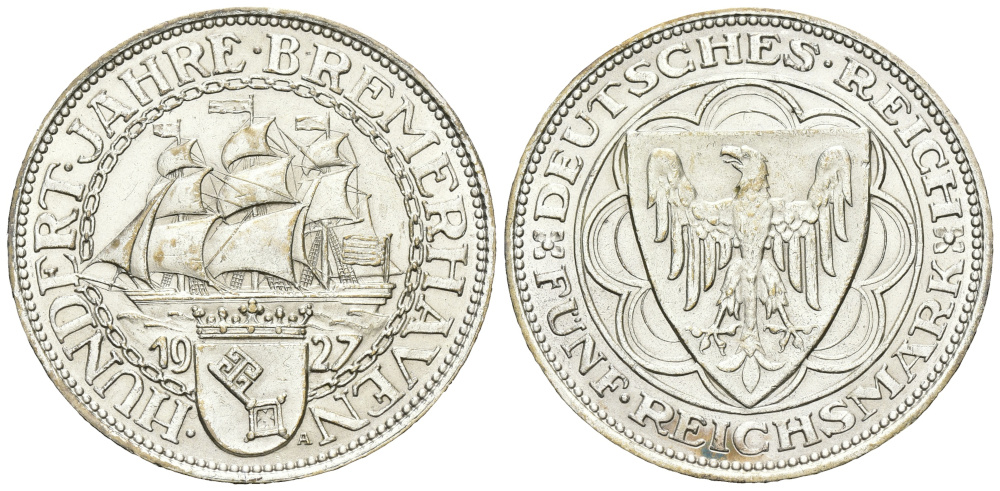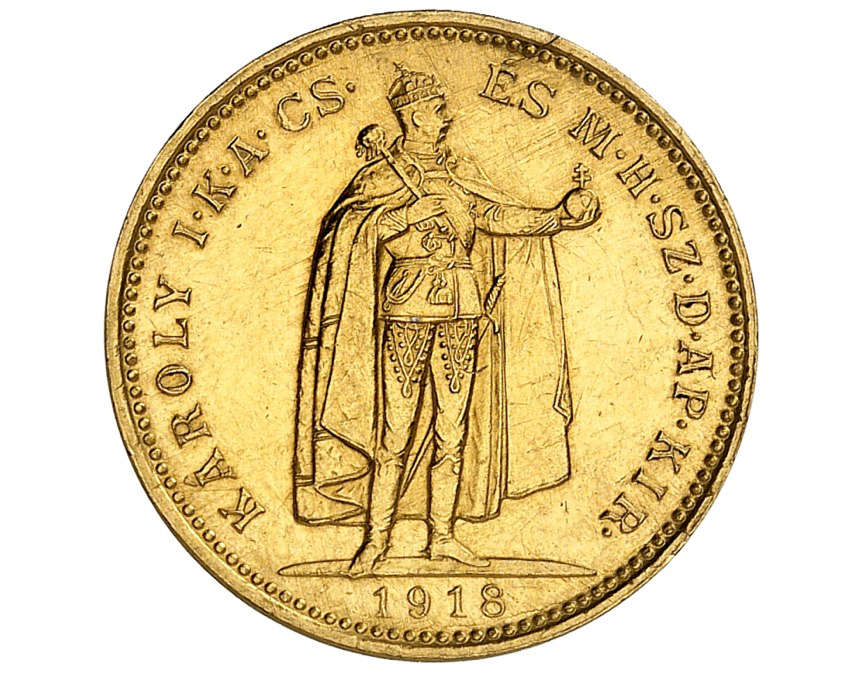Künker’s Summer Auction Sales Were a Major Success
Künker
Auction 408-409
Coins
18-21 June 2024
D-Osnabrück
From 18 to 21 June 2024, the Künker auction house in Osnabrück held its Summer Auction Sales. Catalogs 408 and 409 presented an extensive selection of collections and individual pieces. As was to be expected, the auctions were met with great interest. With a total result of 8.3 million euros, the Summer Auction Sales realized more than 1.5 times their estimate.
In this review, we will first present the five most expensive silver coins, followed by the five most expensive gold coins. We chose this approach because prices for gold coins have increased significantly more than those of silver coins over the past years – by now even rather common gold coins fetch higher results than very rare talers.
To avoid diverting attention from the five-digit results of the silver coins given the six-figure sums paid for multiple gold coins, we chose to present the silver coins first.
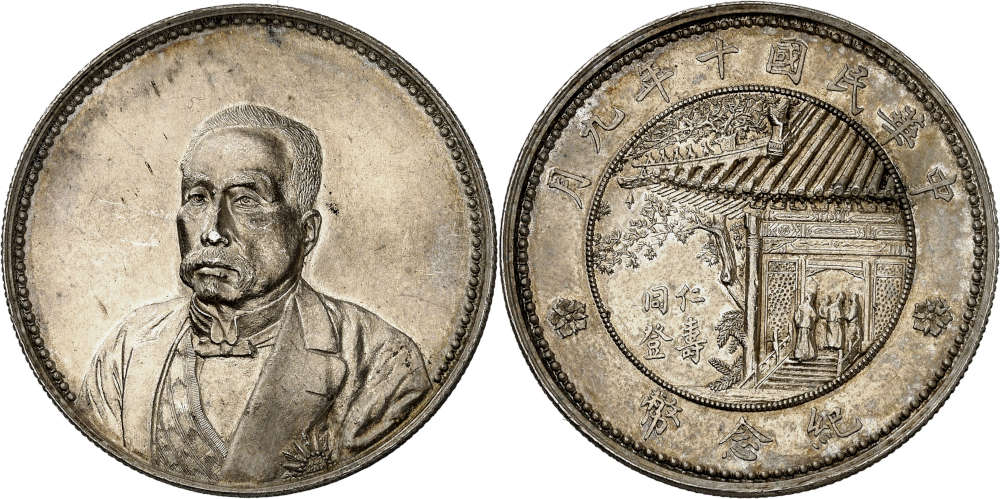
No. 373. China. Republic. 1 dollar, year 10 (1921). Very rare, especially in this quality. NGC MS61. Extremely fine to FDC. Estimate: 10,000 euros. Hammer price: 34,000 euros.
Top 5
Chinese coins are always sure to fetch high prices. This very rare dollar with the portrait of the Chinese politician Xu Shichang achieved a hammer price of 34,000 euros against an estimate of 10,000 euros. Experts immediately knew why – after all, this piece is one of the so-called Pavilion issues and thus one of the most popular Chinese dollars out there. Unfortunately, we still do not know exactly why these coins were issued. While some scholars assume that the coins were produced to commemorate two events at one, namely the 66th birthday of President Xu Shichang and the 3rd anniversary of his taking office, others believe that they were minted to celebrate the opening of the Peking Union Medical College. We consider the latter hypothesis to be more likely.
Let us look at the historical background: The Rockefeller Foundation granted $8 million to finance an education center for Chinese physicians. For this purpose, they collaborated with an hospital that already existed at the time. A major conference was held from 15 to 21 September to inaugurate the new institution.
This is the context of the pieces of this coin type whose legends give the names of physicians that worked at this institution. Other specimens, as the one offered at Künker, might have been distributed among the participants of the congress. On this piece, the Chinese legend “Virtue and a long life flourish together” is depicted below the motif on the reverse.
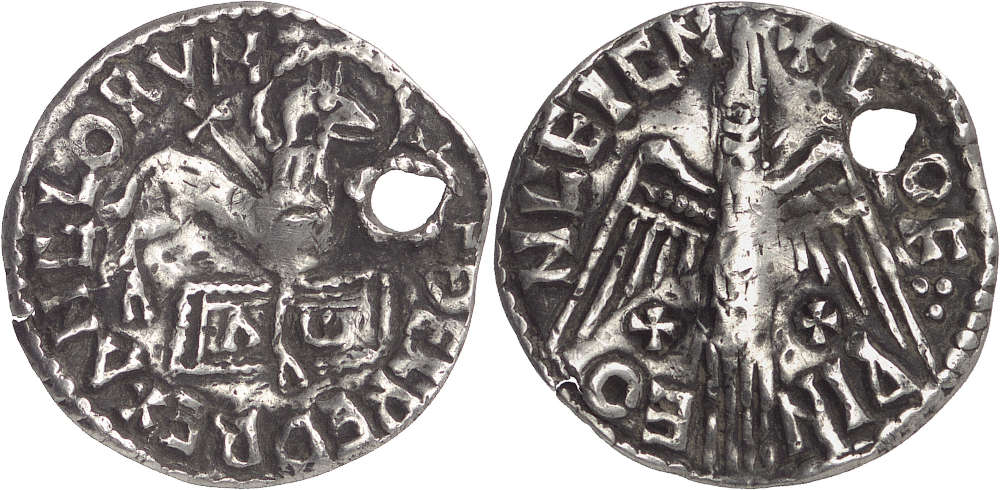
No. 124. Britain. Aethelred II, 978-1016. Penny, around 1009, Chester. Estimate: 5,000 euros. Hammer price: 40,000 euros.
Top 4
The coin that came in fourth in our ranking of the most expensive silver coins comes from a completely different era and a very different region. And yet there is one similarity – this coin has an highly interesting historical background too.
That is why collectors were not bothered by the fact that this specimen certainly is not of perfect quality. Despite the conspicuous punching hole – the coin was probably worn as a piece of jewelry around someone’s neck in the past – the piece jumped from 5,000 euros to impressive 40,000 euros. The proud new owner will certainly be delighted about this highly rare penny of the Anglo-Saxon ruler Aethelred II. Aethelred ruled over Northumbria in the mid-ninth century. His greatest challenge was to defend the kingdom against the Vikings. And this is probably the context of this penny. It is considered to be evidence of religious rituals held by King Aethelred in order to obtain God’s help against Thorkell’s Viking fleet, which invaded his territory in 1009.
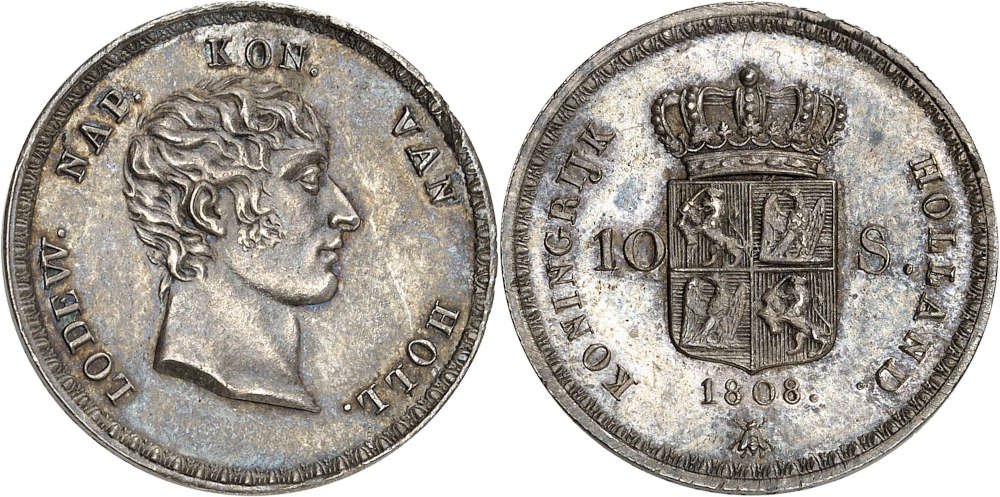
No. 188. Netherlands. Louis Napoleon. 10 stuivers 1808, Utrecht. Extremely rare. NGC MS63. About FDC. Estimate: 40,000 euros. Hammer price: 44,000 euros.
Top 3
A great rarity of exceptional quality – it was no surprise for this coin, which did not even feature in the Beuth Collection, to be sold at 44,000 euros, and thus making the top three of our ranking. Künker’s specialists expected this to happen, as is evidenced by their quite accurate estimate of 40,000 euros.
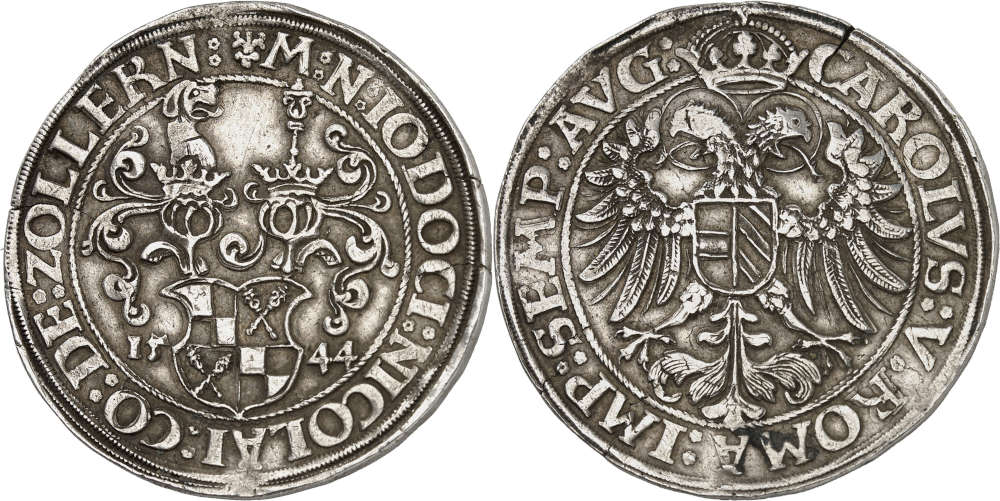
No. 781. Zollern. Jost Nikolaus II. 1544 taler. Extremely rare. Very fine to extremely fine. Estimate: 7,500 euros. Hammer price: 44,000 euros.
Top 2
A rather unexpected result of 44,000 euros was achieved by a 1544 taler from the County of Zoller, minted under Jost Nikolaus II. It had been estimated at 7,500 euros, which is why the coin’s expected value increased more than that of lot No. 188. Therefore, it came in second in our little numismatic chart show.
Jost Nikolaus II Count of Zollern, Lord of Haigerloch was one of the many members of the low nobility of the Holy Roman Empire that we would not know anything about if they had not issued official documents and coins. He was a son of Joachim of Hohenzollern and was not only Count but also Captain of the County of Hohenberg. His ambitions were limited to bringing villages such as Grosselfingen (about 2,100 inhabitants today) and Stetten near Haigerloch (about 1,600 inhabitants today) under his control. Counts – and imperial knights – such as Jost Nikolaus II were the backbone of the Empire and the emperor. They supported the ruler – even had to support him, unless they wanted to run the risk of their territory being swallowed up by their mighty neighbors. Coins were an important means for them to represent themselves. However, specimens of these ruler are usually very rare, simply because they were not able to afford large issues.
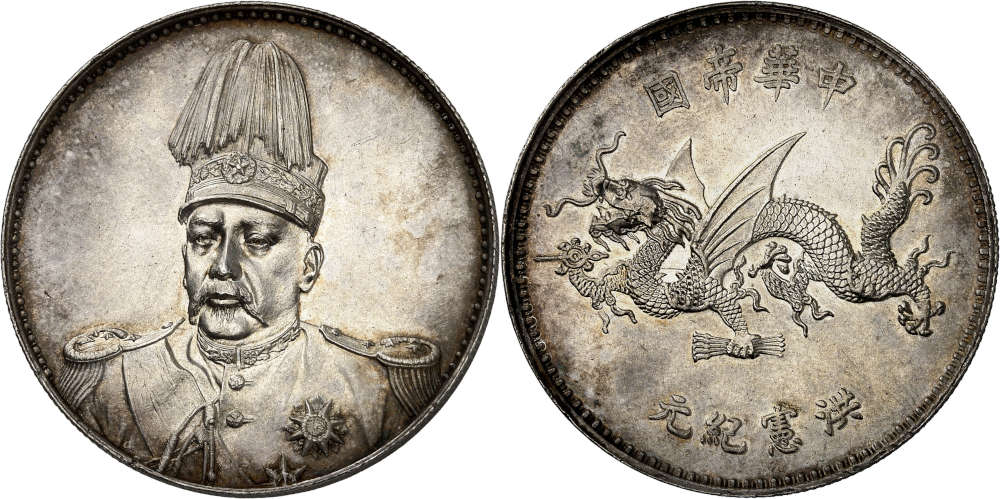
No. 372. China. Yuan Shikai, 1915-1916. Dollar n.d. (1916). Extremely rare. NGC MS64. About FDC. Estimate: 20,000. Hammer price: 48,000 euros.
Top 1
Lastly, we will come back to China: with a hammer price of 48,000 euros, this extremely rare Chinese dollar was the most expensive silver coin of auction 408. The piece is an important testimony to Chinese history of the 20th century. Its obverse depicts General Yuan Shikai in his uniform. The reverse presents a dragon, the symbol of the Chinese imperial throne. And in fact, Yuan Shikai – the former Premier of Emperor Puyi – proclaimed himself emperor of the Chinese Empire under the era name of Hongxian, which can be translated as ‘Constitutional Abundance’. He planned to officially take office in the context of large ceremonial celebrations on 1 January 1916, and this coin was minted for this very occasion. Yuan Shikai had expected to be met with appreciation. Instead, his ambitions were vehemently opposed by his allies. Therefore, the rituals for his taking office were delayed again and again, until the funds allocated to the expensive ceremony were completely taken out of the budget on 1 March. On 22 March 1916, Yuan Shikai resigned – a decision that was also due to his poor health. He died on 6 June 1916 at the age of 65 from kidney failure.
The Most Expensive Coins from Auction 409
And this brings us to gold coins and medals from all over the world.
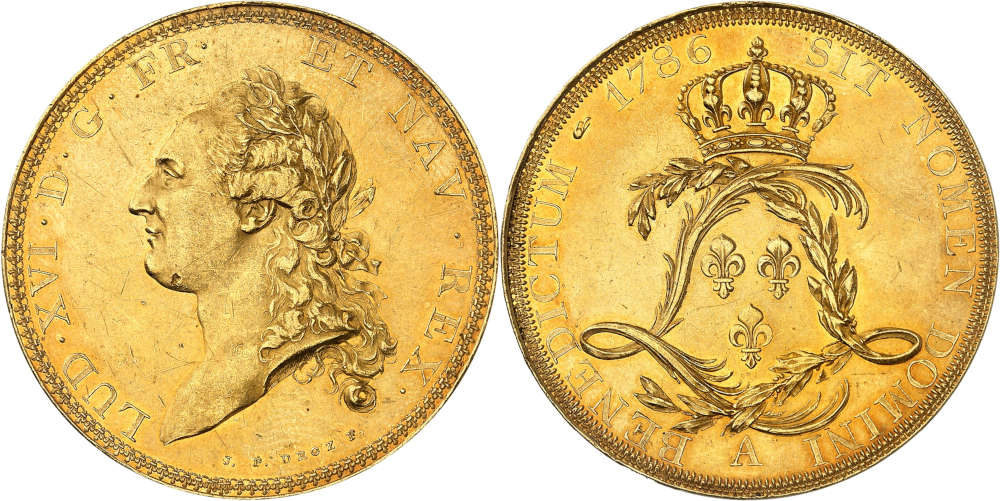
No. 1601. France. Louis XVI. Gold pattern for the écu de Calonne 1786 A, Paris. Unique? Extremely fine to FDC. Estimate: 100,000 euros. Hammer price: 100,000 euros.
Top 5
An estimate of 100,000 euros and a hammer price of 100,000 euros – that was the result of a pattern for the écu de Calonne of 1786, minted in Paris, from the collection of the Egyptian King Farouk. It is most likely unique. The King took advantage of his diplomatic means to make mints across the globe supply him with unique gold patterns.
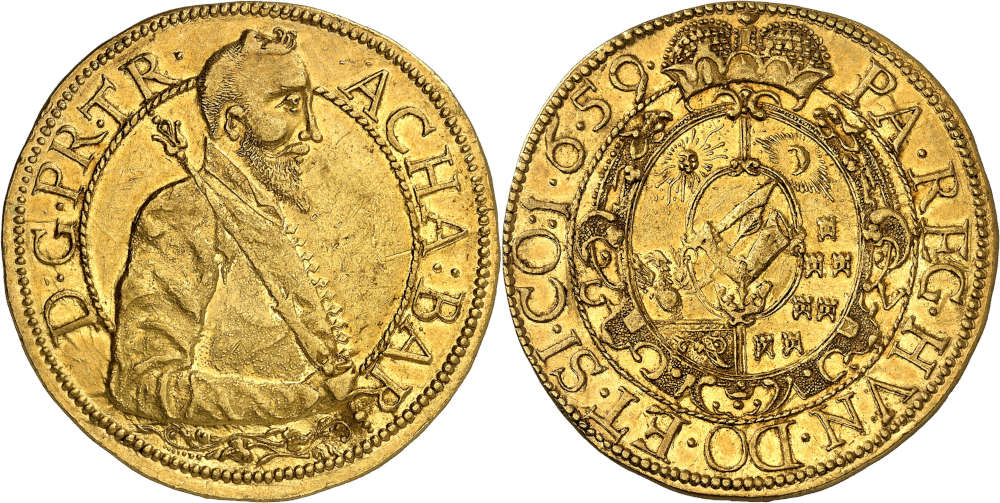
No. 1890. Transylvania. Achatius Barcsai. 10 ducats 1659, Klausenburg. Extremely rare. Estimate: 60,000 euros. Hammer price: 110,000 euros.
Top 4
With a result of 110,000 euros, a tenfold ducat by Achatius Barcsai from 1659 almost doubled its estimate of 60,000 euros. This is another coin of utmost historical importance. It commemorates the time when the Turks tried again and again to install a king that was favorable to them on the Transylvanian throne. While the Calvinist Rákóczi had been ruling over Transylvania with the emperor’s approval since the religious peace of Linz in 1645, Achatius Barcsai was the Ottoman candidate. His 1659 tenfold ducat was probably a diplomatic gift used to buy the support of the Transylvanian nobility. After all, power constantly changed hands at the time – four times between 1657 and 1659!
Barcsai himself was driven out of Transylvania as early as in August 1659. Although he was able to restore his power for a short time, a new rival – János Kemény – entered the picture and had him arrested and executed in 1661.
All multiple gold coins of this eventful period are very rare and coveted – which is one of the reasons for the impressive result of this piece.
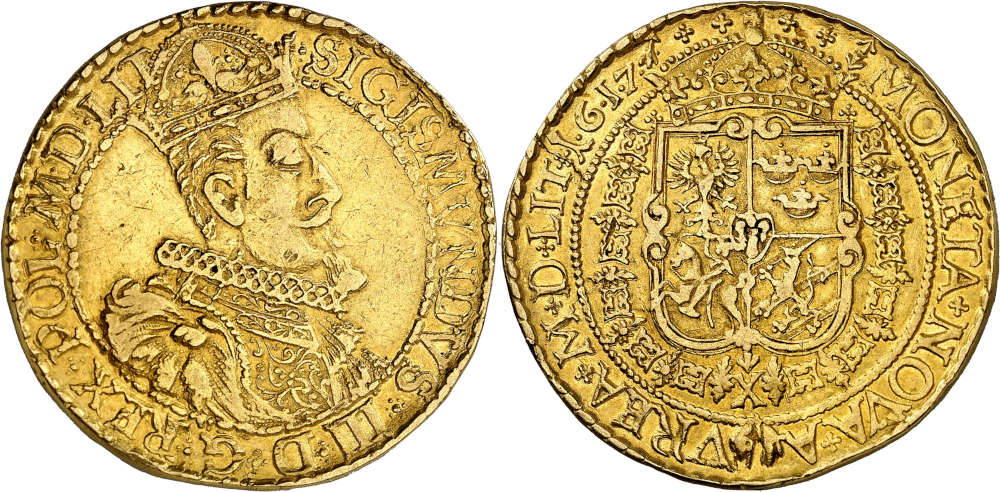
No. 1513. Lithuania. Sigismund III of Poland. 10 ducats 1617, Vilnius. Extremely rare. Very fine. Estimate: 50,000 euros. Hammer price: 200,000 euros.
Top 3
Overall, multiple gold coins of the 17th century are currently among the most popular objects in the coin market. Their fantastic portraits and impressive weight amaze collectors around the globe. This also applies to this 10fold ducat of Sigismund III of Poland, minted in 1617 in Vilnius. It had an estimate of 50,000 euros and realized a hammer price of 200,000 euros. The high result demonstrates that Polish collectors are currently among the most active bidders in the coin market.
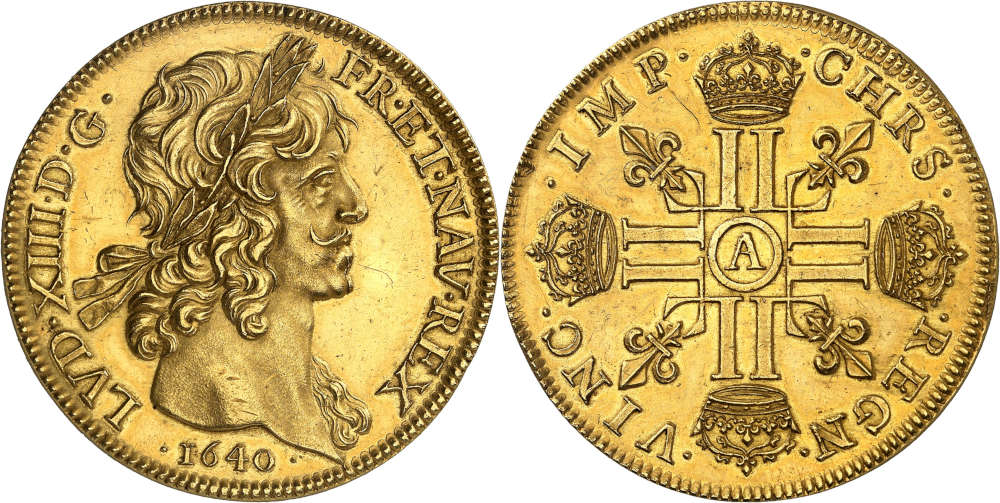
No. 1573. France. Louis XIII. Huit Louis d’or à la tête laurée 1640, Paris. Extremely rare. Extremely fine. Estimate: 200,000 euros. Hammer price: 260,000 euros.
Top 2
Another rare multiple gold coin of the 17th century made our list and came in second. It is an eightfold louis d’or by Louis XIII from 1640. It had an impressive estimate of 200,000 euros but rose even higher to achieve 260,000 euros. The denomination can seldomly be found. Gadoury describes it as R5. So it was no surprise for this extremely well-preserved piece to fetch such a high result.
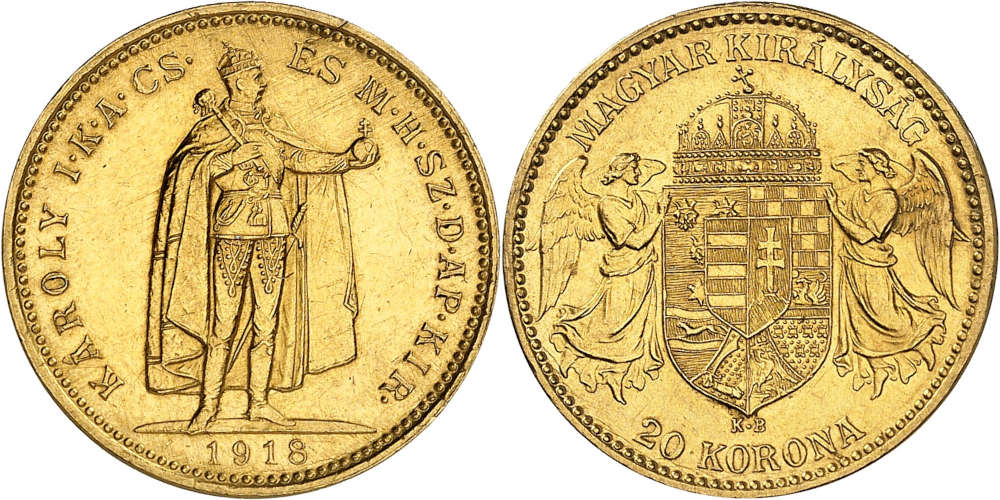
No. 2052. Austria. Charles I. 20 kronen, 1918, Kremnica. Extremely rare, probably the only specimen on the market. Extremely fine. Estimate: 150,000. Hammer price: 360,000 euros.
Top 1
360,000 euros – that was the winning bid for the 20-kronen piece of Charles I, minted in 1918 in Kremnica. It made the unique piece the most expensive coin of the auction sale. And rightly so: The coin is extremely rare, there is just a single piece available on the market. It is of utmost numismatic importance and has a touching story. The coin marks the end of Habsburg gold coinage.
After all, Charles I was the last Austro-Hungarian Emperor. He ruled from 1916 to 1918, and abdicated on 11 November 1918. As there was a shortage of metal during the First World War, only a few gold coins were minted during his reign. And most of them were melted down again. Only Austria’s leading museums, and probably the Emperor himself, received a piece of this year for their collections. This specimen is probably the piece that the Emperor himself received and took with him when he fled into exile. After all, it is said that the Emperor gave this coin – which more than doubled its estimate of 150,000 euros in auction 409 – to a loyal inhabitant of the island of Madeira, who had diligently taken care of him until his death. Charles fell victim to the Spanish flu, and died on the island on 15 March 1922.
These were just some of the spectacular results of auctions 408 and 409. Other coins sold for significantly less money. Why don’t you take a look at all the auction results? It is always a surprise to see how much history can be bought for little money.




